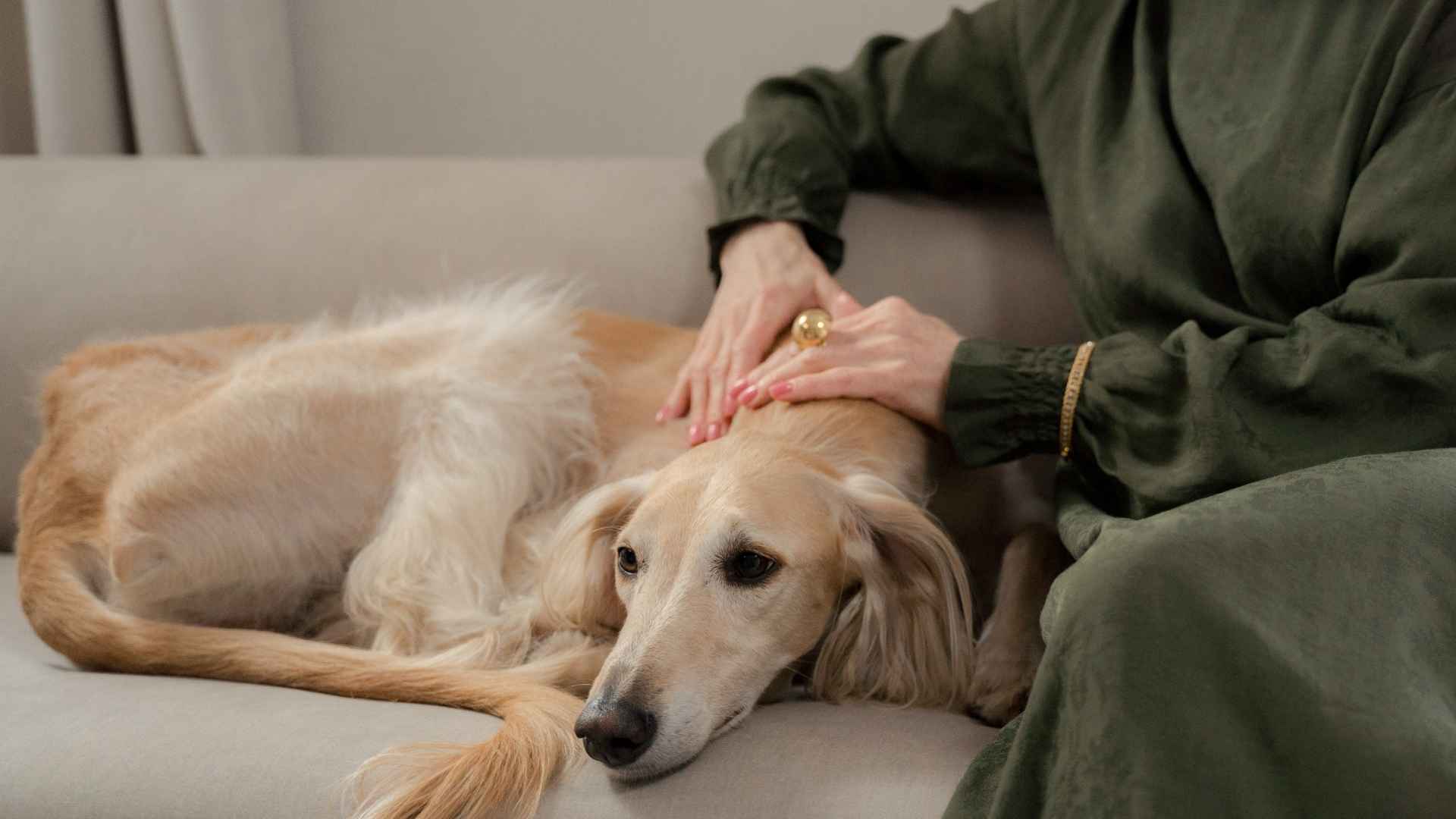According to WebMD, around 74% of pet owners experience improved mental health. Despite this fact, many people hesitate to keep dogs because they do not have enough time to look after and play with them.
While some dogs require constant attention, others are low-energy dog breeds that can spend most of their day lounging or relaxing on the couch. Cutting it short, these laid-back dogs like to relax to their max!
But does that mean they do not require any care? Of course, these dogs also need affection, attention, and regular exercise to stay healthy.
Do you want a low-maintenance and low-energy canine companion to cuddle with on a relaxing weekend? Have a look at these 7 dog breeds that are literally couch potatoes.
Lazy Dog Breeds
1. Great Dane
Great Danes are one of the biggest dogs in the world. Unlike their size, they tend to be gentle and docile. They are very patient and make good friends with smaller kiddos.
Great Danes are a breed with extremely slow metabolisms. They take in a lot of calories and then spend long periods burning them. That is why they are very lazy. However, these gentle giants always try to be with you, even if it is just sleeping.
Grooming and Care
Great Dane is a relatively low-maintenance breed. The American Kennel Club suggests brushing them weekly with a medium bristle brush to minimize shedding. They require occasional baths. However, their big size makes bathing a time-consuming task.
Great Danes have moderate exercise requirements. They need one to two hours of activity every day to stay healthy. You can take them on long leisurely walks. This mellow fellow loves dancing and taking a nap.
Health Considerations
Due to their large size and genetic predispositions, Great Danes are vulnerable to various health issues such as:
Large heart
Dilated cardiomyopathy
Hip dysplasia
Hyperthyroidism
Happy tail syndrome
Degenerative myelopathy
Wobbler syndrome
2. Shih Tzu
Shih Tzus are small dogs with big personalities. Flat faces and short legs are distinctive traits of these brachycephalic breeds. They were originally bred to be your companions.
They are friendly and affectionate, and make great family dogs. You will often find them lounging or sleeping in their owner’s lap.
Health Considerations
Flat faces make Shih Tzus vulnerable to breathing issues like brachycephalic syndrome. They are also prone to ear infections due to their droopy ears. Symptoms of ear infections include:
Ear scratching
Head shaking
Redness
Foul smell
Grooming and Care
Shih tzu parents should regularly clean their pup’s ears with a vet-approved solution. It is important to dry the ear following a bath. Use vet-prescribed medicines and antibiotics in case of ear infections.
Shih Tzus are indoor pets and do not require too much exercise. However, daily physical activity is important to keep them fit. Aim to take them for short walks and engage them in indoor play sessions.
3. Basset Hound
Basset hounds are the epitome of laziness. Droopy ears, wrinkled face, and stubbly legs distinguish these little dogs from other breeds. These dogs are real couch potatoes. When not on a scent trail, you will find this popular hunting breed sleeping.
Grooming and Care
PetMD shares these basic grooming and care guidelines for your basset hound:
Brush daily to reduce shedding.
Bathe them monthly with a good dog shampoo and dry their skin thoroughly after the bath.
Get your basset hound checked for ear infections on a regular basis.
Consult your vet if you notice yellow discharge and redness in your pup’s eyes.
Basset hounds love food and are prone to obesity, which contributes to their laid-back nature. These dogs require daily exercise of 30 to 60 minutes to stay healthy and maintain their weight.
Health Considerations
Just like Shih Tzus, Basset Hounds are also a flat-faced dog breed with droopy ears. That is why they are prone to similar health issues as the Shih Tzus.
4. Bernese Mountain Dog
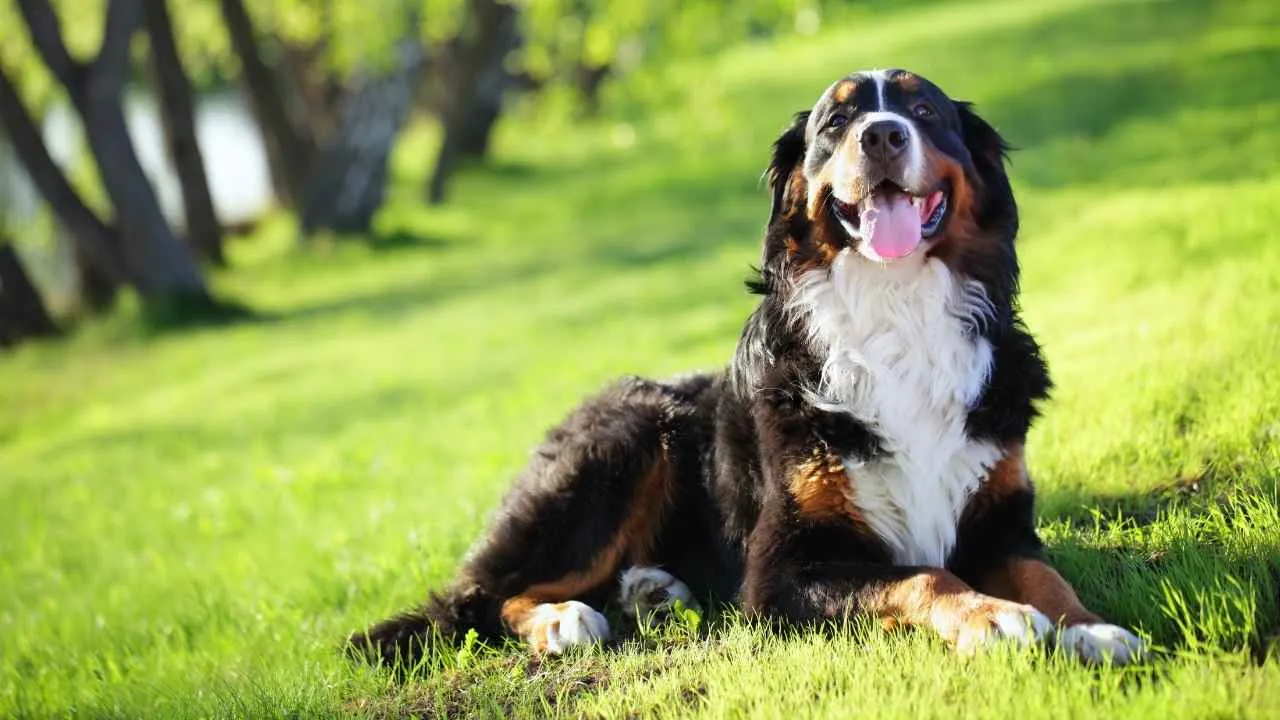
Bernese mountain dogs are a good choice for anyone who’s looking for a calm companion. Just like other lazy breeds, Berners also enjoy their couch time. However, they need more exercise than other breeds.
They are not too vocal but bark to inform their owner when a stranger enters their territory. Their small size makes them suitable for apartment living.
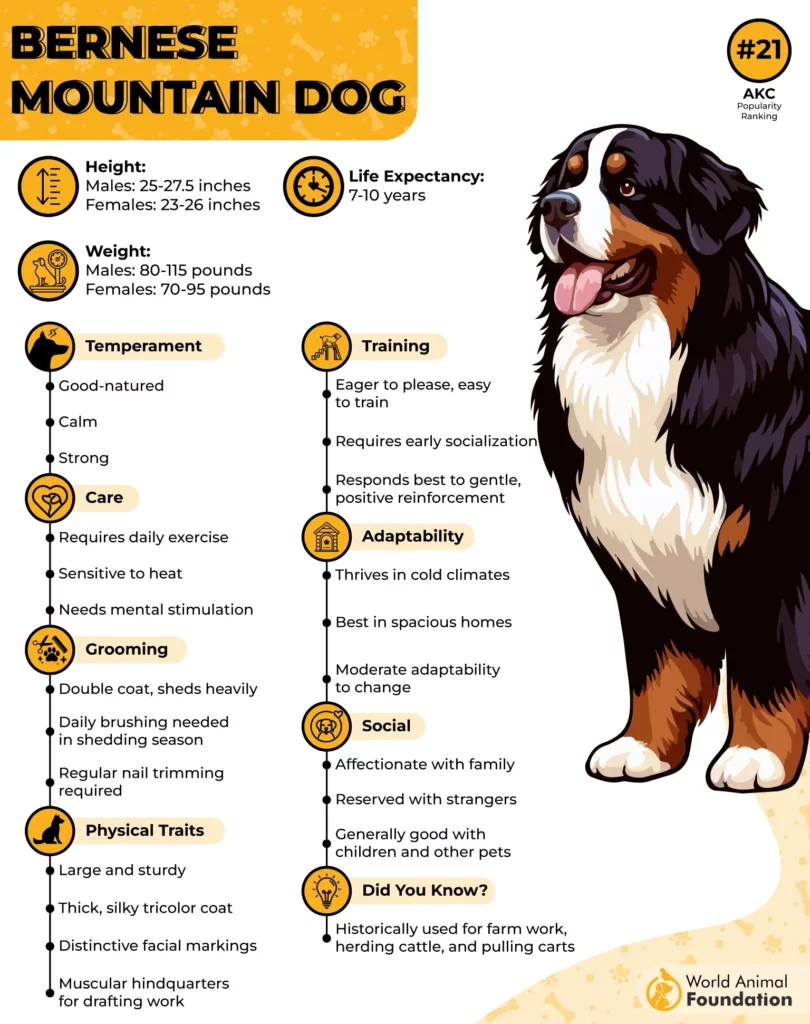
Grooming and Care
Berners need regular exercise and a daily walk of at least an hour or two to stay content and avoid boredom. Their thick coat requires regular grooming. Brushing prevents matting and keeps them comfortable.
Therefore, brush your pup’s hair several times a week. Use deshedding tools to remove undercoat and make shedding more manageable. Regular bathing helps maintain overall hygiene.
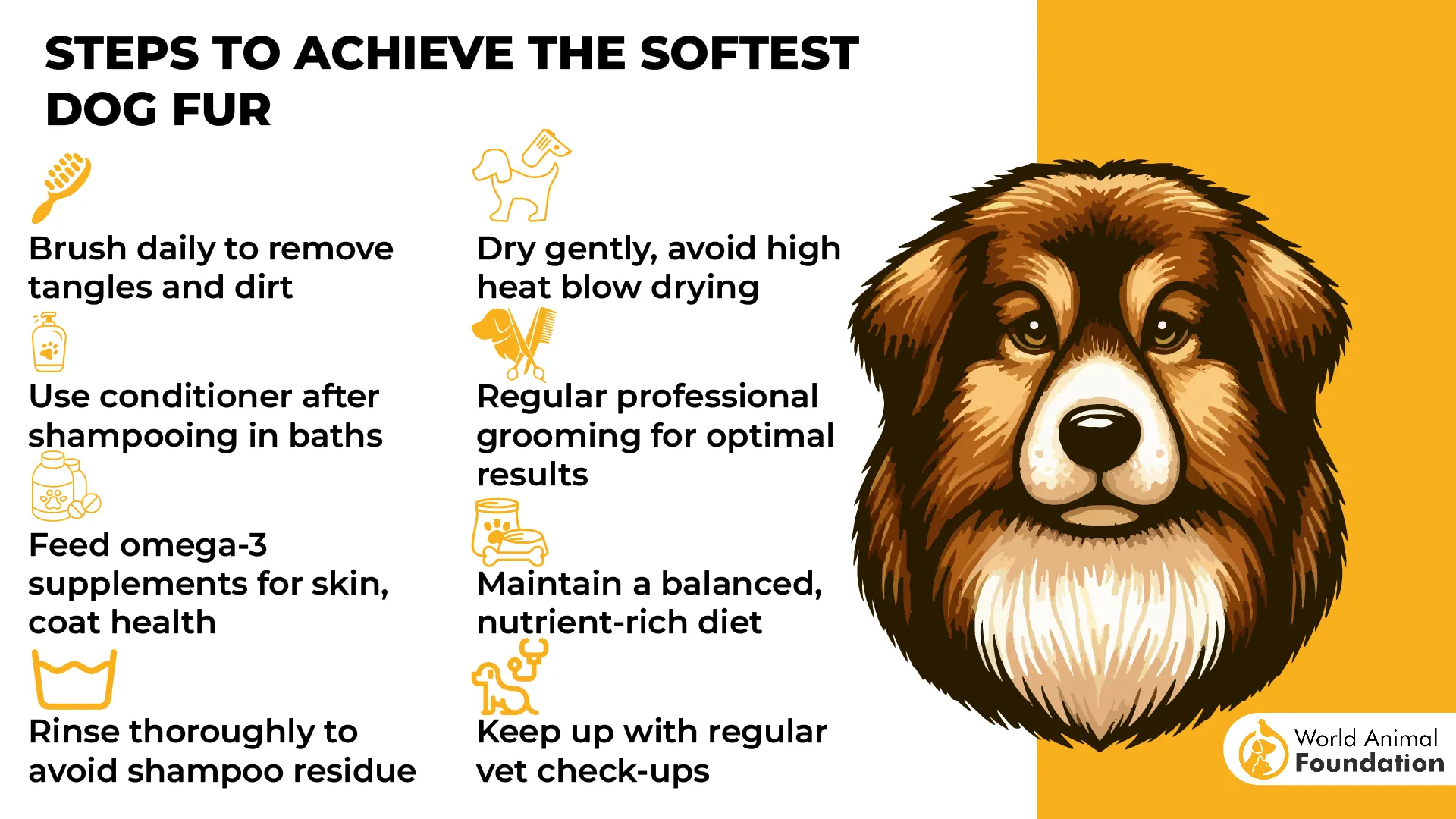
Health Considerations
Berners are generally healthy dogs. However, they might experience some health problems such as hip or elbow dysplasia, eye infections, bloat, and cancer.
Important: Bloat is a life-threatening surgical emergency in Berners. Take your Burner to the vet immediately in this case.
5. Cavalier King Charles Spaniel
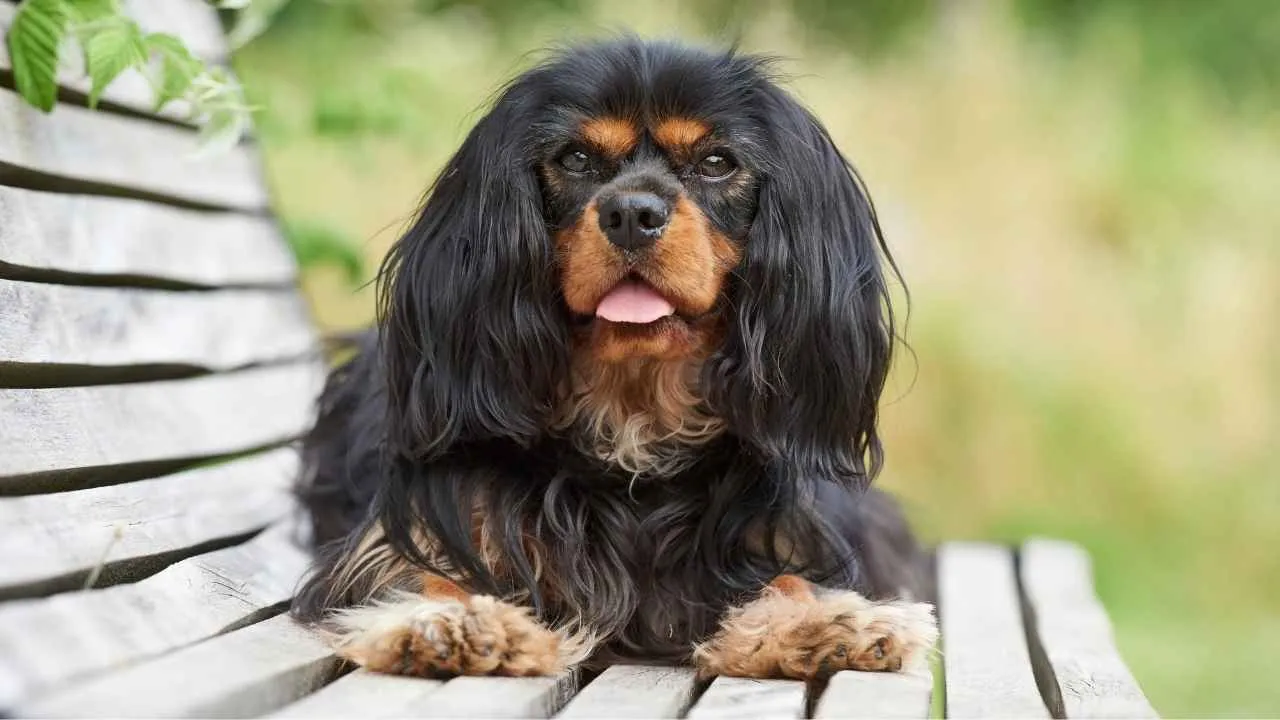
Unlike other spaniel breeds that have high energy levels, the Cavalier King Charles Spaniel is a low-energy dog. This laziness might be associated with their Pug genes or their royal name. It is a great dog known for its affectionate nature.
These lap dogs are the happiest when they are with their owners. Moderate exercise needs make them suitable for living in small spaces. They can thrive with short walks and indoor play sessions. Therefore, Cavalier King Charles spaniels are a good choice for apartment dwellers.
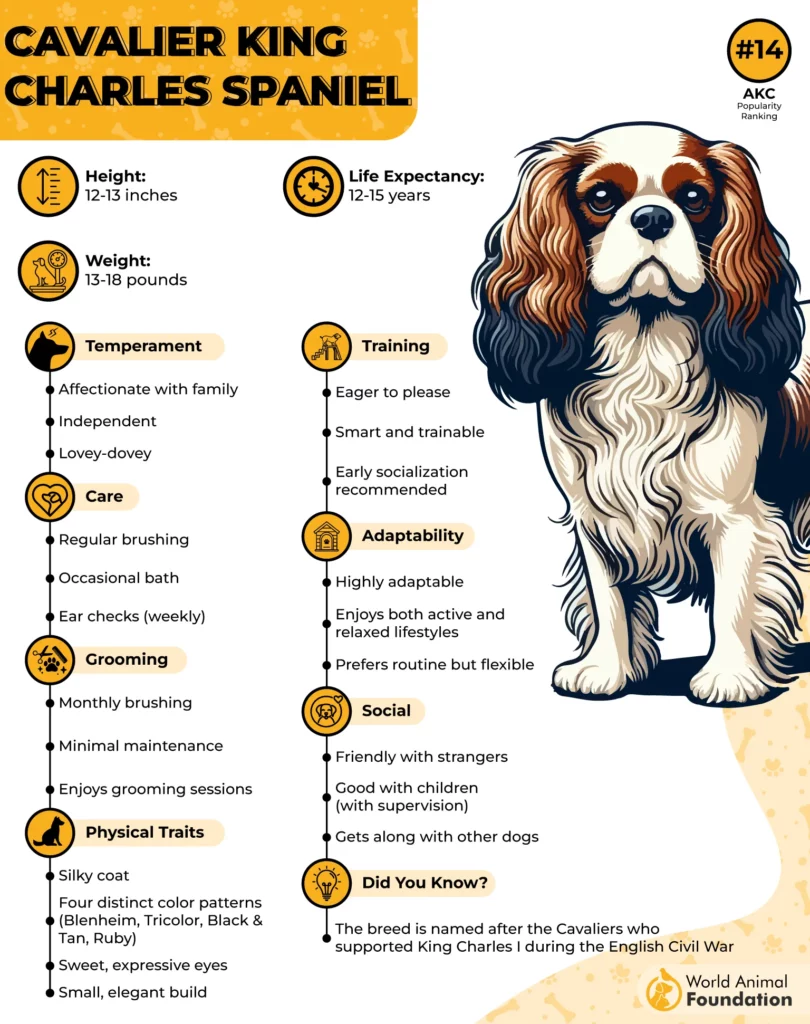
Grooming and Care
Here are some grooming tips for your Cavalier King Charles Spaniel.
Brush your Cavalier at least 3-4 times a week.
Bathe your dog daily to clean the coat soiled with urine.
Use a cotton ball dipped in a vet-recommended spray to clean their ears.
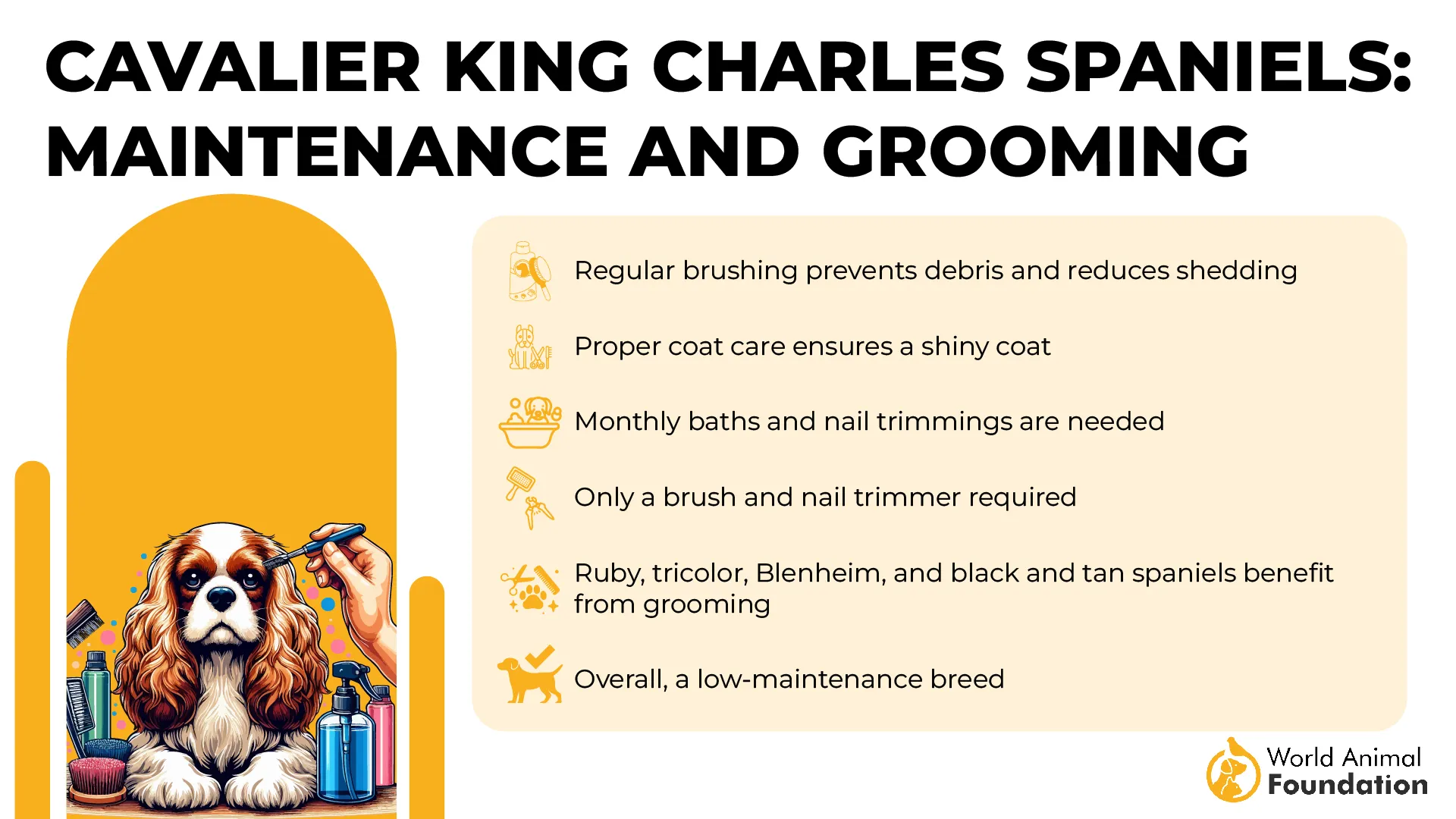
Health Considerations
According to Britannica, Cavaliers can experience serious health problems in their life. For instance, they are prone to develop a neurological condition called syringomyelia, mitral valve heart disease, hip dysplasia, and eye issues. Get your dog screened for these conditions from time to time.
6. Saint Bernard
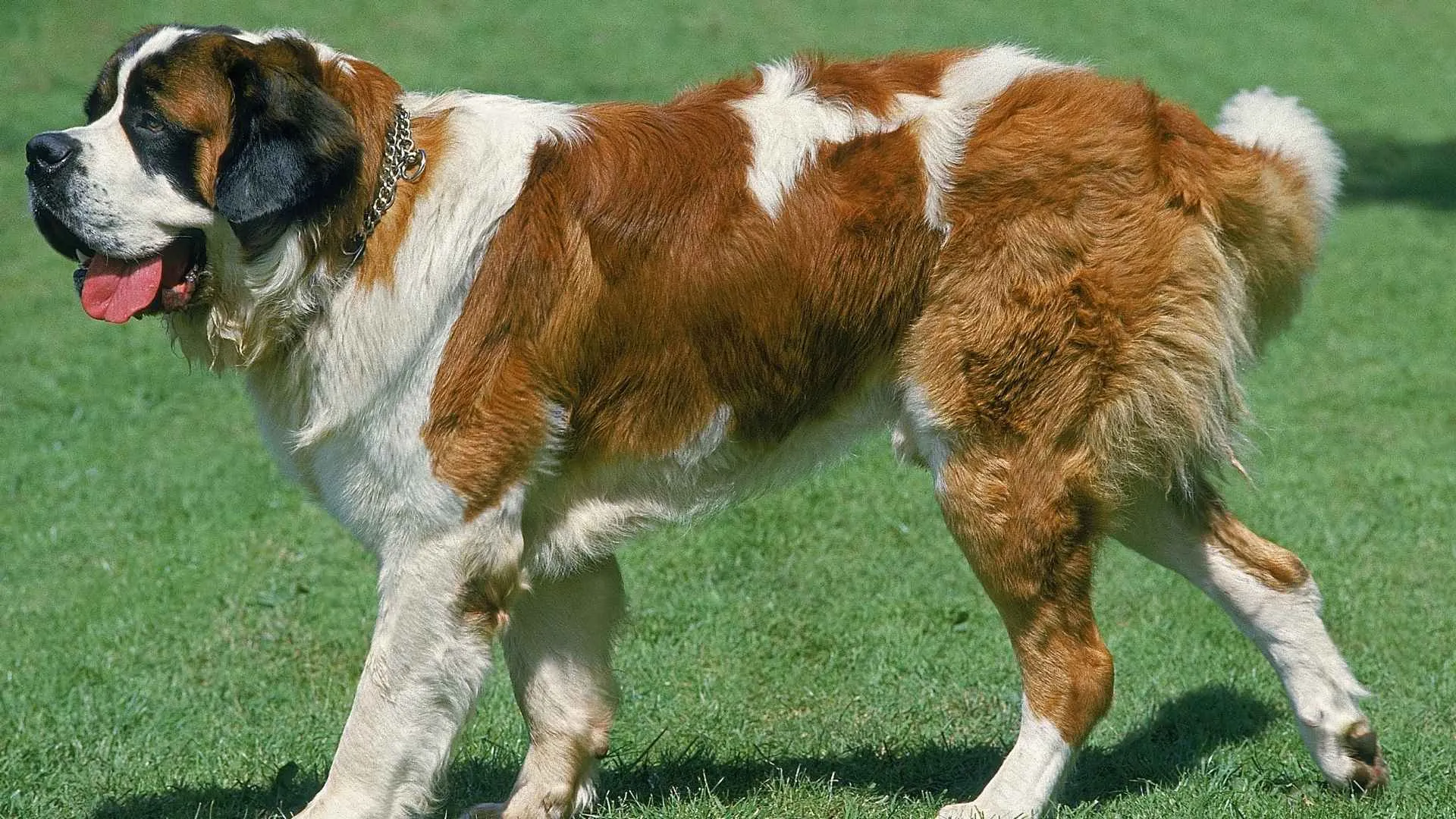
This superhero helps find people lost in the snow. Yet another example of gentle giants, they keep sleeping and drooling all the time. So, do not expect a lot of energy from these couch potatoes. They make wonderful nanny dogs for your kids.
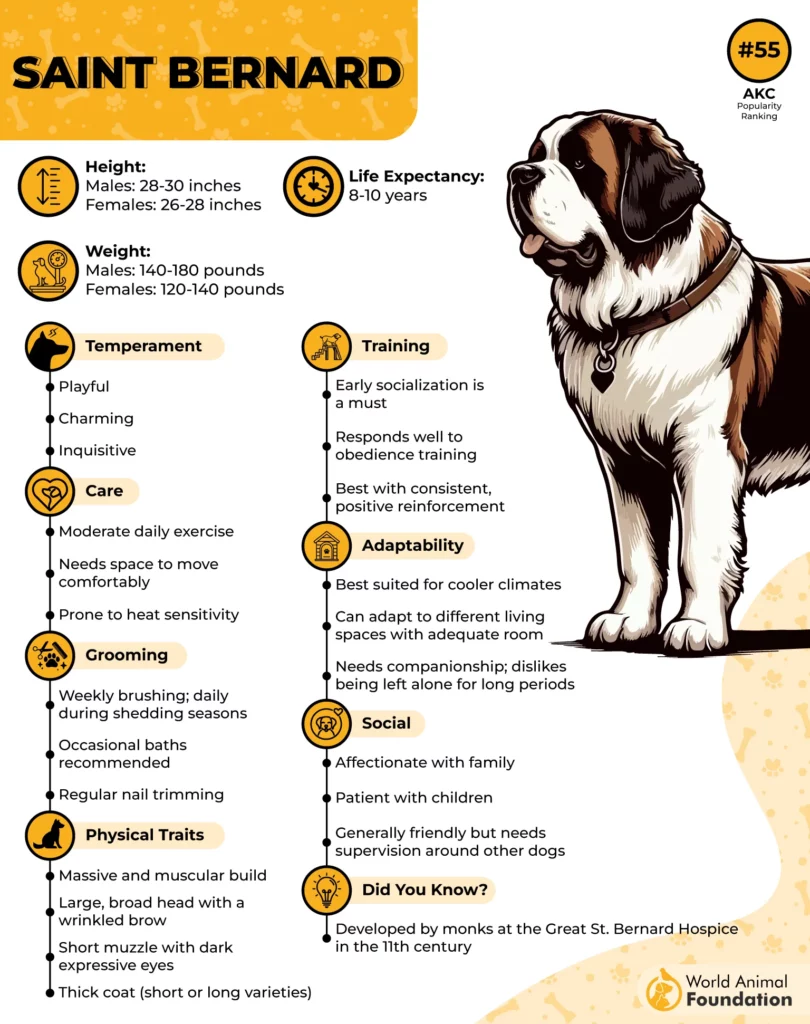
Grooming and Care
Bernards’ exercise needs include regular walks and playtime for physical and mental stimulation. Their thick coats need regular grooming. Regular brushing, nail trimming, and occasional bathing to maintain overall hygiene. Check their ears for debris and wax buildup.
Health Considerations
Like many other breeds in the dog world, Bernards can also experience health problems like hip dysplasia, heart problems, and bloat (GDV). Take your dog for a regular checkup if you notice any symptoms of these diseases.
7. Chow Chow
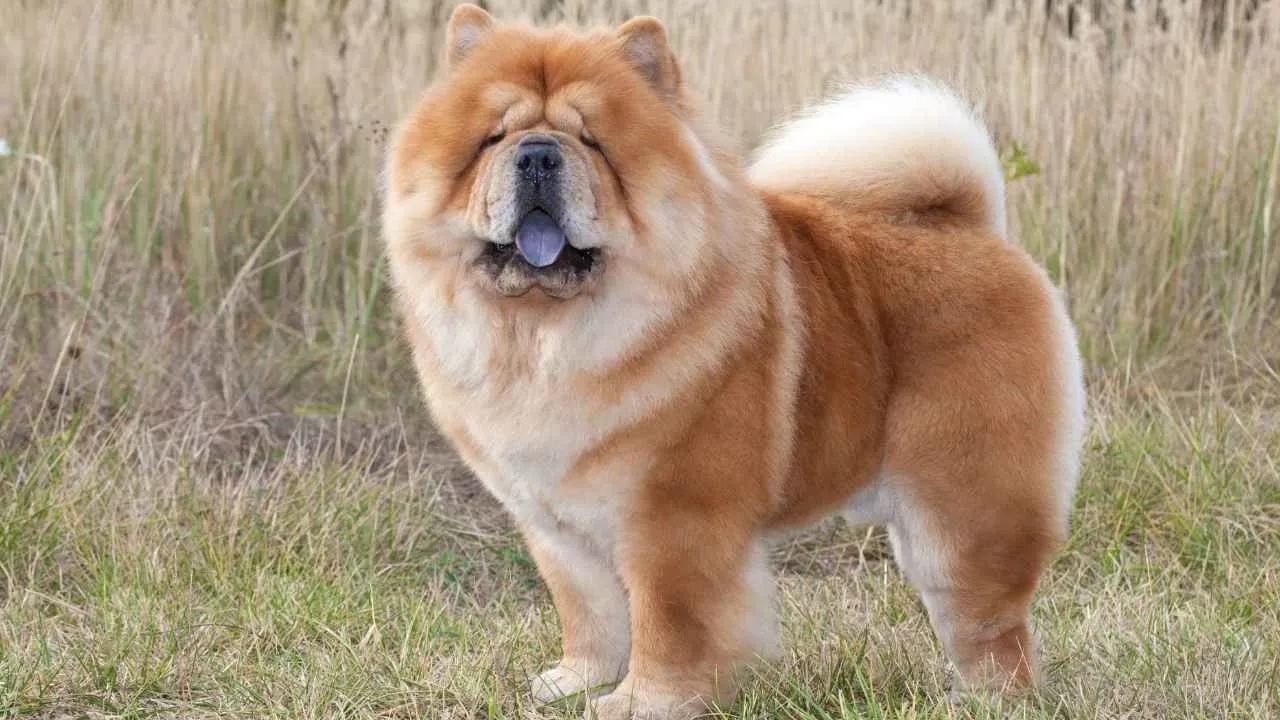
Chow Chow is a big canine that loves napping. Their devoted, affectionate, and independent nature makes them a perfect pet for peace lovers. Due to their fastidious nature and reserved attitude, people often compare them with cats. Chow chows are the cleanest of all breeds.
Do you know? Chow chows can sleep for up to 18 to 20 hours a day.
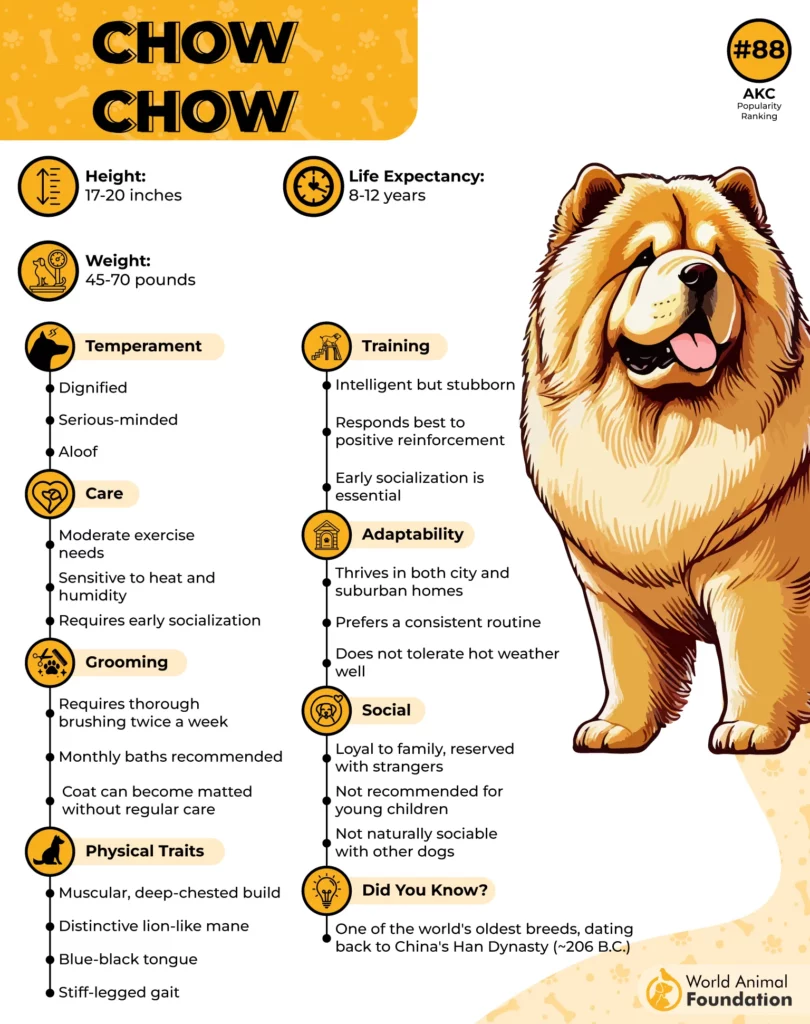
Grooming and Care
Chow Chow grooming involves regularly brushing, bathing, and trimming to protect their dense double coat. Routine care can help keep their skin clean and healthy. A moderate exercise of 1 to 1.5 hours will suffice.
Health Considerations
Although all dog breeds are susceptible to diabetes, Chow Chows are at higher risk. Common symptoms include frequent urination, increased eating and drinking, and unexpected weight loss. However, increased blood sugar levels can be managed with daily insulin injections.
Conclusion
Having a low-maintenance dog does not mean that you do not need to look after them at all. Being a pet parent, you still need to fulfill a lot of your pet’s needs, from grooming to exercise. However, lazy dogs require shorter walks and less time for other needs such as brushing, bathing, or overall hygiene.


